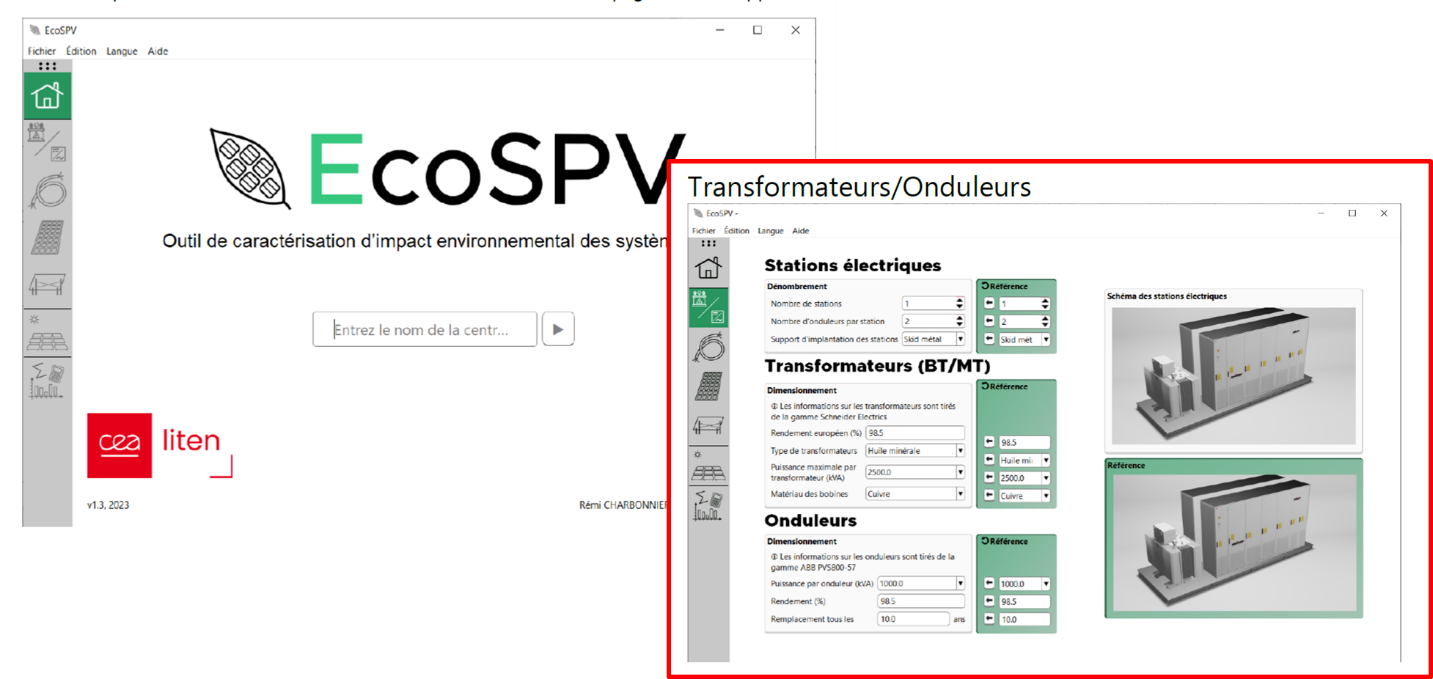Knowing the environmental impact of photovoltaic technologies enables us to work on reducing it more effectively, notably through Life Cycle Assessment (LCA). For this purpose, it is essential to be able to characterize and identify it precisely. It is with this goal in mind that we have been developing analysis tools for several years, including the one highlighted today: EcoSPV. This is a major focus of the ITE INES.2S, serving the solar industry.
The impact of a photovoltaic power plant is the sum of the impact of the modules (or panels) - which is the main source of carbon or ozone impact - and the impact of what is called "BOS1" (for Balance of System). The significant contribution of BOS to certain environmental impacts, such as those linked to ecotoxicity or human toxicity (with a share of over 75% of this criterion), makes the study of this area particularly important. This is especially true given that the impact of photovoltaic panels is decreasing over the years, with the result that the proportion of environmental impact due to BOS in power plants is increasing. The problem is that the data used in the literature to characterize the impact of BOS are in most cases outdated. This has a direct impact on the quality and relevance of
LCA results.
In this context, we have developed its first impact analysis tool dedicated to power plants, coupled with a database incorporating up-to-date data. The aim is to provide
more accurate, consistent and customized impact results, with little or no need for expert time.
EcoSPV, an easy-to-use, interactive tool
In its first version, the EcoSPV tool takes into account the main components of an electrical installation:
- inverters (to convert the direct current electricity produced into alternating current)
- transformers (to raise the voltage of the electricity to match that of the grid)
- photovoltaic modules and their supports, and electrical cables.
The tool's integrated impact database is based as far as possible
on primary data, obtained from drawings or manufacturers' information. Its user-friendly and interactive interface simplifies the configuration of various components and information regarding the power plant, such as its location and installed power.
The EcoSPV way
The proposed approach is to systematically model two plants in parallel: the plant under study and a "reference" plant, which can be modified as required.
It is allowing to model exactly the same two power plants, with only one difference, to measure the impact of this choice. The tool produces various indicators, such as the energy and CO2 payback times, and provides an overall graph with the impacts in proportion for the various components, with the option of "zooming in" on a particular impact.
EcoSPV Tool frontiers
- The current tool takes into account the main components of the electrical installation: inverters, transformers, photovoltaic modules and their supports, and electrical cables. These are the components presumed to have the greatest environmental impact.
- Excluded at this stage are the digging of cable trenches, junction boxes and additional protection for underground cables, cables linking inverters to transformers, electrical boxes integrated into electrical substations, all ancillary installations, such as the premises required for employees, SCADA (monitoring), video surveillance, the structural work, i.e. the preparation of the land beforehand (clearing, servicing, earthworks), the fencing surrounding the power plant.
- Furthermore, not all phases of the life cycle are taken into account. Only the extraction, manufacturing and installation phases are currently included in the scope of this study.

EcoSPV completes the set of tools dedicated to life cycle analysis and essential to eco-design, developed within the framework of the INES.2S ITE. Our researchers will be continuing their work to extend the limits taken into account by the tool to other components, other types of power plant, and to add other life-cycle stages (recycling, transport, end-of-life).